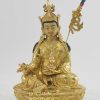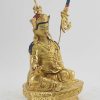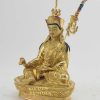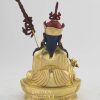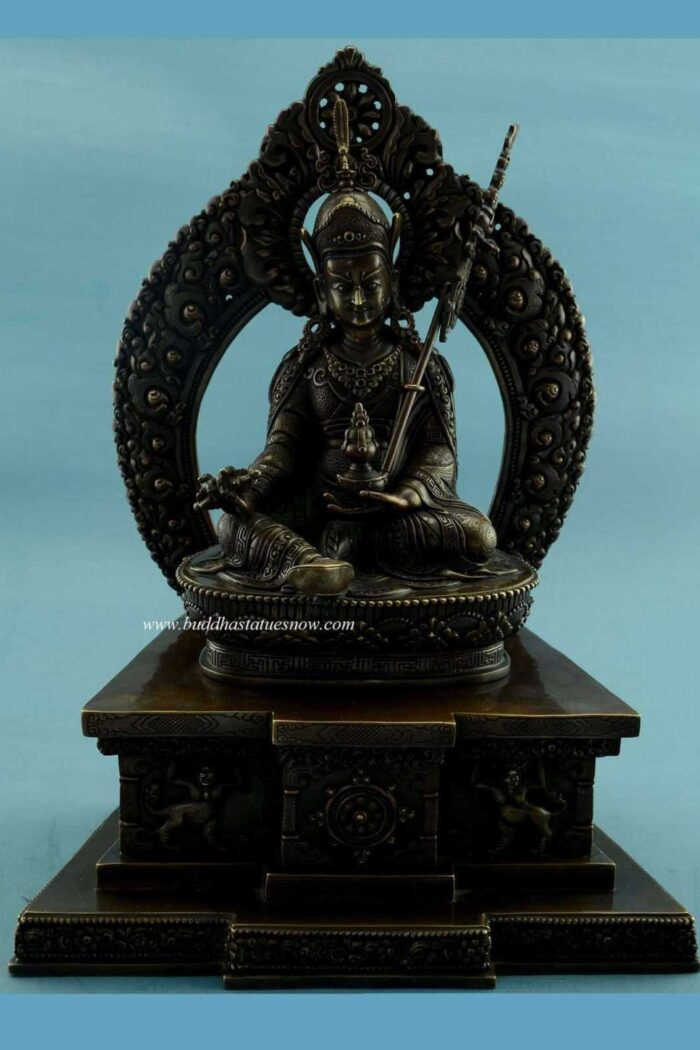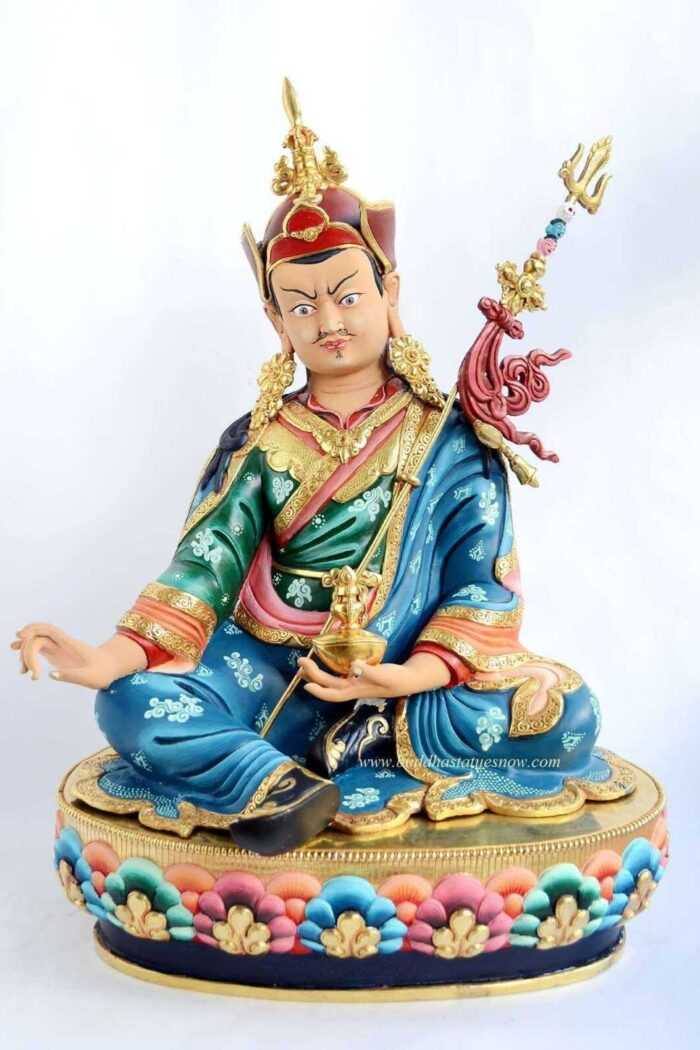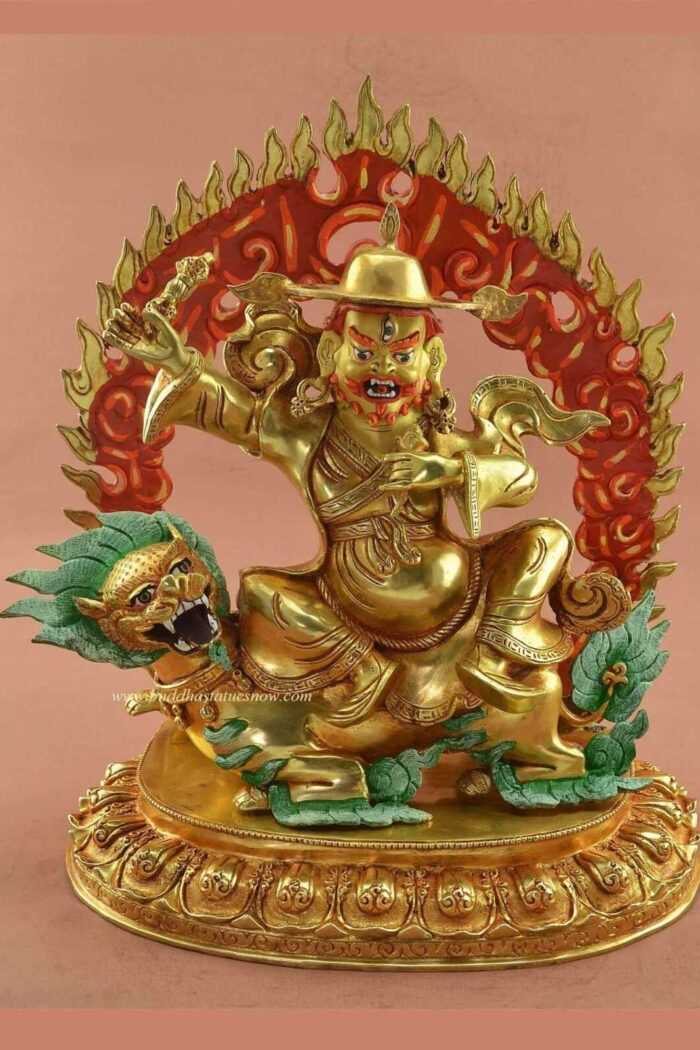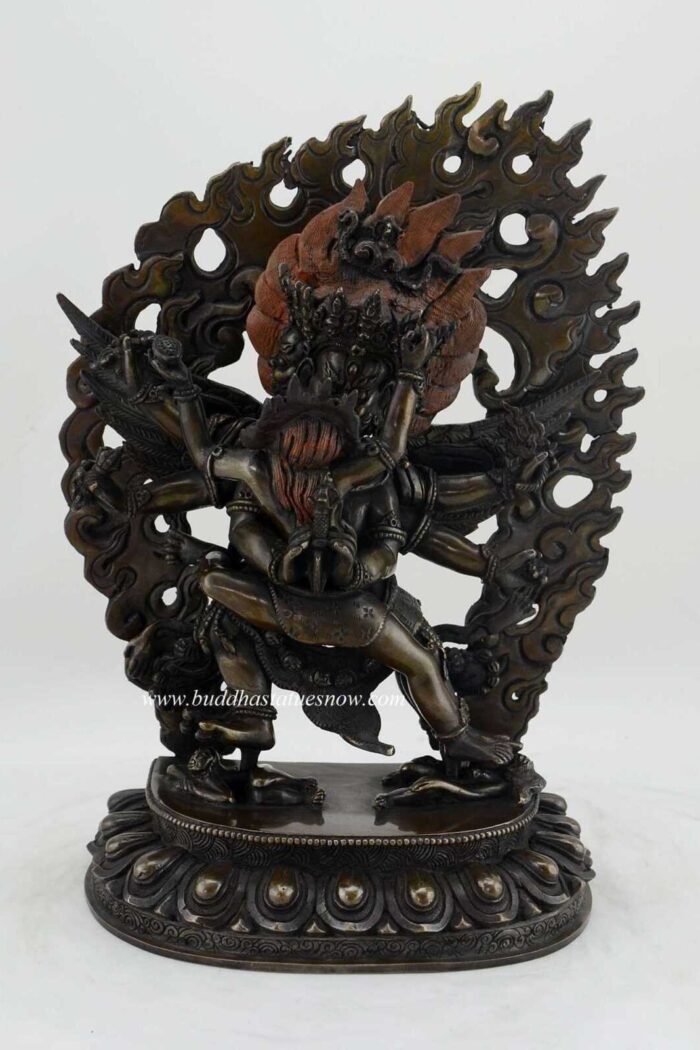This Nepali Guru Rinpoche statue depicts him holding the khatvanga. The khatvanga is a mystical weapon and on the tip the three skulls representing the three worlds (Trailokya) are impaled. These three skulls represent the three realms of desire, form and formlessness which Guru Rinpoche has transcended. Additionally, in his right hand he holds the vajra which is a symbol for “diamond or thunderbolt”. It is also symbolically a representation of the masculine attribute of compassion and skillful means.
On the tip of his hat is a vulture feather which symbolizes his realization of the highest view. Furthermore, his left hand is in Dhyana mudra and in the palm is the kapala “skull cup” with the vase of immortality inside.
Nepali Guru Rinpoche Statue History
Our Nepali Guru Rinpoche statue depicts the founder of the Nyingma school of Tibetan Buddhism. As a result, he is a common feature in Tibetan sculpture art. The guru is also known “lotus born” and he is believed to be of divine origin from the mythical land called Oddiyana.
Guru Rinpoche came to Tibet in the 8th century to assist with the construction of the first monastery at Samye. However, his skills were metaphysical in nature. Indeed, his reputation for being of powerful spiritual persuasion was the reason he was summoned. After his arrival, he used the Vajrakilaya dance to remove the evil mountain spirits that were haunting the construction site. As a result, the location was made safe and construction could be completed.
While Guru Rinpoche was at Samye, he made a good impression on the Tibetan King. As a result, his Tantric Buddhism was chosen as the national religion of Tibet. Additionally, Guru Rinpoche foresaw the rise of a future Tibetan king who would become an adversary of Buddhism. Therefore, he wrote down the Tantric teachings in the secret language of the dakinis and stashed it away in secret locations. After the demise of the adversarial Tibetan king, the teachings were rediscovered and Tibetan Buddhism was reestablished.



